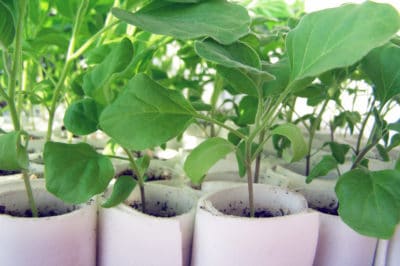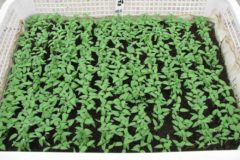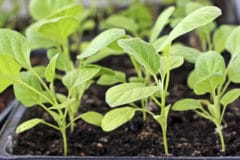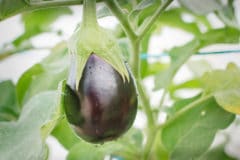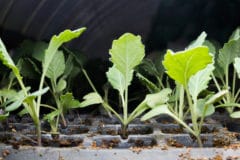When to Transplant Eggplant Seedlings
Your eggplant seedlings are ready to transplant when they reach 6 to 8 inches tall and have several leaves. Before planting them in your garden, harden them off to prepare them for outdoor conditions. About three days before planting time, place your eggplant seedlings outside for the day, then bring them indoors at night until planting day.
Required Temperature for Transplanting Eggplant Seedlings
Eggplant (Solanum melongena) growth is directly related to weather conditions. It is very susceptible to cool temperatures, growing best between 70°F (21°C) to 85°F (29°C). Depending on the climate in your area, plant your eggplant seedlings after the last danger of frost.
Soil Conditions for Eggplant Seedlings
The soil must be warm for eggplant seedlings because cold soil will deter plant growth, and may even damage them. The ideal soil temperature for transplants is 60°F (15°C). If your soil is colder than that, you can warm up the soil by spreading plastic mulch over the soil a few weeks before planting your seedlings. Planting eggplant seedlings in raised beds that warm up quicker is also an option.
Your soil should also have a pH of 6.0 to 6.5 for optimal seedling growth. Add organic fertilizer to the soil, if your pH test doesn’t meet the conditions needed for seedlings.
Eggplant Seedling Spacing
When your soil is warm, and the seedling are hardened, you can plant your garden. Space the eggplant seedlings in rows from 30 to 36 inches apart. This allows room for circulating the air, and prevents overcrowding. Each seedling should be 18 to 24 inches apart.
Maintaining Eggplant Seedlings
After planting your seedlings, it’s important to provide regular care and maintenance for them. The following maintenance tips are essential for continued growth of your transplants:
- Water to a depth of 6 inches each week
- Pinch off the suckers as the seedlings grow
- Prune excess foliage and yellow leaves
- Pick young eggplant fruit to encourage new growth
If your follow this eggplant seedling planting and how-to guide, then you’ll enjoy healthy, flavorful eggplants for the whole growing season. Warm soil and temperatures, regular watering, full sun and pruning are the keys to successful eggplant growing.
